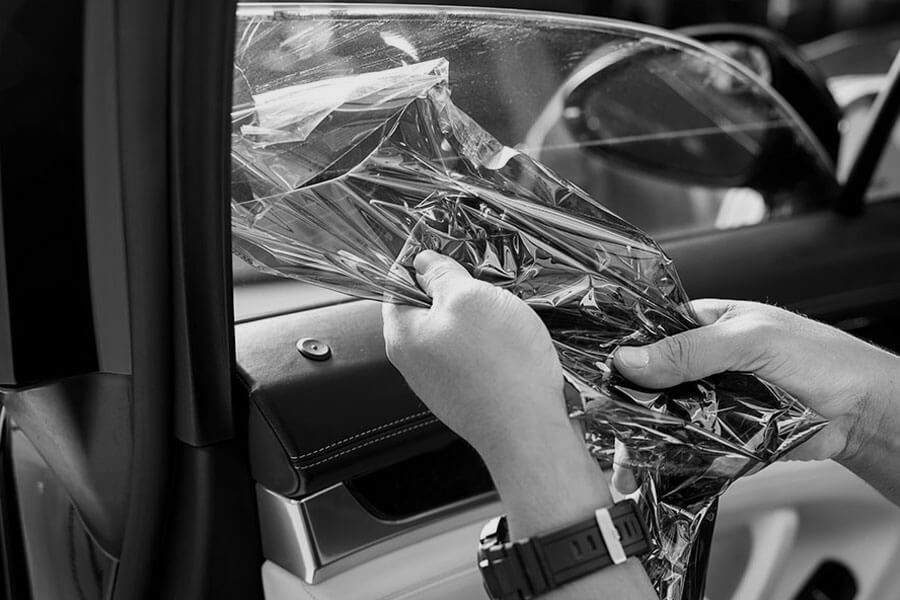Those looking for new car window tints may be surprised to learn that the shape and shade of the film are not the only variables. Within the window tint world, there are a variety of compositions that make up the film. These different compositions have their benefits, but the most advanced is ceramic window tints.
Ceramic window tints have proven to be the most effective in blocking the sun’s harmful rays. As such, they are the absolute best option for anyone willing to pay the higher cost.
To compare, it’s essential to understand what window tints are made of. The most basic and common tints will typically be made up of three layers;
- The bottom layer will be an adhesive layer responsible for keeping the film attached to the window.
- The middle will be a polyester layer dyed to the desired color and darkness level.
- Finally, the outer layer will be a scratch-resistant coating to help protect the film from rock chips and other dings.
Manufacturers using more advanced technologies will add or replace some of these layers to yield better results. In the case of ceramic window tints, the dyed layer is replaced with a layer made up of ceramic particles. This layer is sandwiched between two clear polyester films, adding the same adhesive in the innermost and hard coat outermost layers.
This increased number of layers makes the film slightly thicker, allowing for more overall protection of your windows.
What is Ceramic?
Ceramic is a catch-all term for most nonorganic and non-metallic materials, such as clays and porcelain. These materials have a wide range of uses, first used on spacecraft. The heat-resistance properties are unmatched, and eventually, these advanced ceramics worked their way down to window tint film.
Benefits Of Ceramic Window Tints
Compared to traditional dyed window tint film and every other film technology, ceramic window tints are an improvement in every way.
- UV Protection. The properties of these nano-ceramics allow them to filter out 99% of UV rays from the sun. These results are not dependent on having a darker tint level either, meaning even a 70% VLT tint will yield excellent UV protection.
- Solar Heat Rejection. As with UV ray protection, these tints are exceptional for reflecting heat away from your car.
- No Signal Interference. Unlike other popular advanced film technology, metallicized window tints, ceramic window tints are non-metallic and non-conductive. This means they should have a minimal impact on your phone, radio, or other signal-emitting electronics.
- Won’t Fade. The color on these tints doesn’t come from a dye. While traditional window films will begin to fade over time and turn purple, such a problem is absent from ceramic window tints.
Are Ceramic Window Tints Worth It?
Ceramic window tints will occupy the upper end of the window tint price range. Each individual will place a different level of importance on their tints, but there is no denying that these tints hold a clear advantage in just about every category. If you have a car that you particularly love and plan to keep it as long as possible, ceramic window tints can be an excellent investment as they perform better and last longer than regular films.








